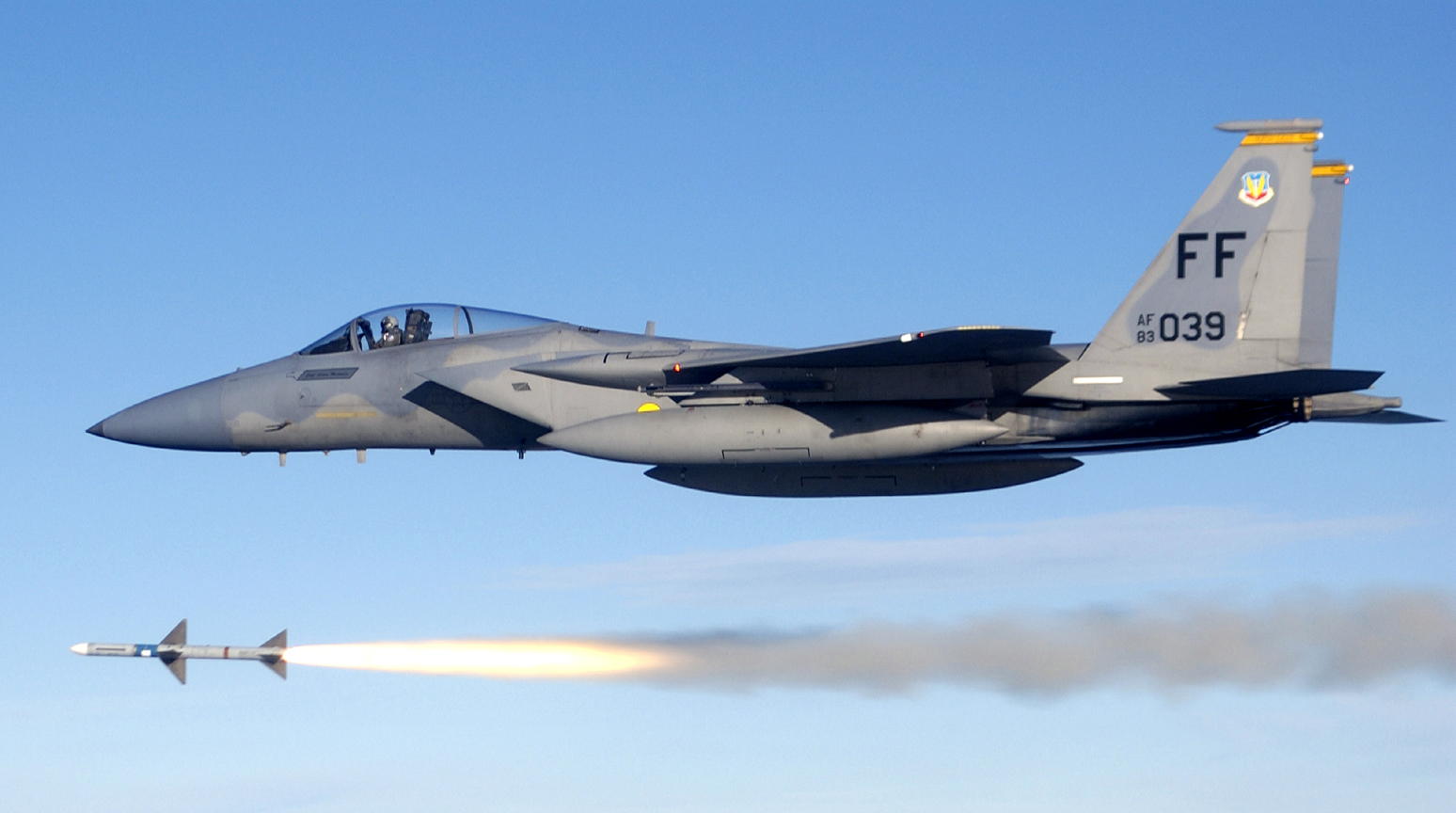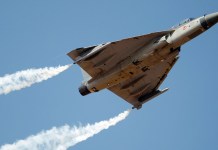The US Air Force let out a shocker earlier this month when it decided to reduce the number of F-15EX Eagle II aircraft that it intended to buy in the long term from 144 to 80. However, there is a twist in the narrative. The F-15EX Eagle II could now become the first aircraft capable of firing hypersonic missiles.
Secretary of the Air Force Frank Kendall and Chief of Staff of the Air Force Gen. Charles Q. Brown, testifying before the House Armed Services Committee, said this while revealing their plans for the F-15EX.
Instead of replacing numerous older F-15C/D Eagle fighters with the newer, more capable F-15EXs, the Air Force will replace the older F-15s with remotely piloted drones or nothing at all if drones aren’t feasible. The retirement of existing aircraft would lead to a glaring deficit of about 400 fighter jets in the USAF.
The silver lining is that the F-15EX, according to General Brown, will be the first aircraft in the Air Force to be certified with the new Hypersonic Attack Cruise Missile (HACM). Due to its payload capacity, the fighter jet can carry substantially more armament than the modern F-35 fighter, The National Interest noted.

The process of certification of the F-15EX with the hypersonic attack cruise missile is likely to wrap up in the second half of this decade.
Due to its huge payload capacity and the HACM’s relatively big size, the F-15EX is an appropriate platform for the HACM bypassing the F-22 Raptors and the F-35 Lightning II.
In February this year, F-15EX completed its first live-fire test event by shooting an air-to-air missile on a target drone. The F-15EX is the most recent version of the F-15 platform which has undergone significant upgrades and modernizations over the previous models. The F-15EX airframe is designed for a 20,000-hour service life, in addition to an enhanced weapon payload.
The Air Force’s procurement chief, Andrew P. Hunter, told the HASC panel that the necessity to get the EXs as soon as possible was forced by the dismal state of the F-15Cs now in the fleet. The F-15C/D’s problems have been going on for years, and according to a recent Congressional Budget Office estimate, the aircraft’s availability has dropped to 45%.
Despite not being fifth-generation, the F-15EX has some “special capabilities,” according to Kendall. However, budgetary constraints and the need to still keep more F-15Es were listed as reasons for buying fewer F-15EX fighter jets.
F-15EX To Go Ballistic With Hypersonic Missile
In March last year, the US Air Force officially accepted the F-15EX at Boeing’s St Louis production facility in Missouri. The F-15EX is the most advanced version of the F-15 Eagle twin-engine, all-weather tactical fighter jet developed by American aerospace giant Boeing.
The current fighter jet is built on the same frame as the old F-15 and is around the same size as the Su-30 MKI.
The fighter can carry out various missions, including homeland and airbase security, no-fly zone enforcement against limited or non-existent air defense systems, and standoff weapons deployment.

It can play a host of other roles, such as air superiority, interceptor, deep penetration strikes on enemy infrastructure, strategic bombing, and ground attack. There have been speculations that it will assume the role of a launchpad for hypersonic weapons.
When the US Air Force officially accepted the delivery of the first F-15EX fighter jets last year, a senior military official, Colonel Dorey, the Air Force’s F-15EX Program Manager, projected the aircraft as perfect for firing hypersonic missiles.
The F-15EX would be critical for the United States’ hypersonic weapons program. The weapons are too large to fit inside the small internal weapon bay of stealth fighters, which necessitates a carriage under the fuselage.
Further, Boeing has also previously said that the F-15EX’s centerline pylon can hold armaments up to 22 feet long and 7,000 pounds in weight. It has previously presented a model featuring a fictitious 7,300-pound hypersonic missile.
“It carries more munitions than the F-35 can. So, for certain missions like cruise missile defense of the United States or defensive counter-air missions, it’s a superior platform despite the lack of some of the full fifth-generation capabilities. It does have several fifth-generation components on it to give it more capability than a baseline F-15 would have”, said Secretary Kendall in his testimony.
Additionally, the F-15EX fighter has a top speed of Mach 2.5 and a combat range of 1,100 miles, compared to the F-35’s range of 670 miles. As a result, it is the best tactical jet for carrying hypersonic missiles over extended distances.
US Hypersonic Weapon Development
Though the US does not have an operational hypersonic weapon yet, various agencies and defense contractors are in the various stages of research and development of a working hypersonic weapon. The US defense spending saw a steep hike in the hypersonic program, which had not gotten the same attention earlier.
The United States rekindled its interest in hypersonic weapons, fearing that the country is falling behind in developing cutting-edge military technology. General David Thompson, the vice-chief of space operations for the US Space Force, declared last year that the US was “not as advanced” in hypersonic weapons as China or Russia.
However, the US Air Force recently secretly tested a Hypersonic Air-Breathing Weapon Concept (HAWC), which the service described as a success.
Further, Raytheon and Northrop Grumman announced their collaboration in June 2019 to develop a hypersonic weapon. Raytheon will build the missile, while Northrop Grumman will provide the scramjet engines that will propel it.
If all goes well and according to the plan, the F-15EX would soon be able to fire its hypersonic missile which will allow the US to match the capability of its rivals.
- Contact the author at sakshi.tiwari9555@gmail.com
- Follow EurAsian Times on Google News




